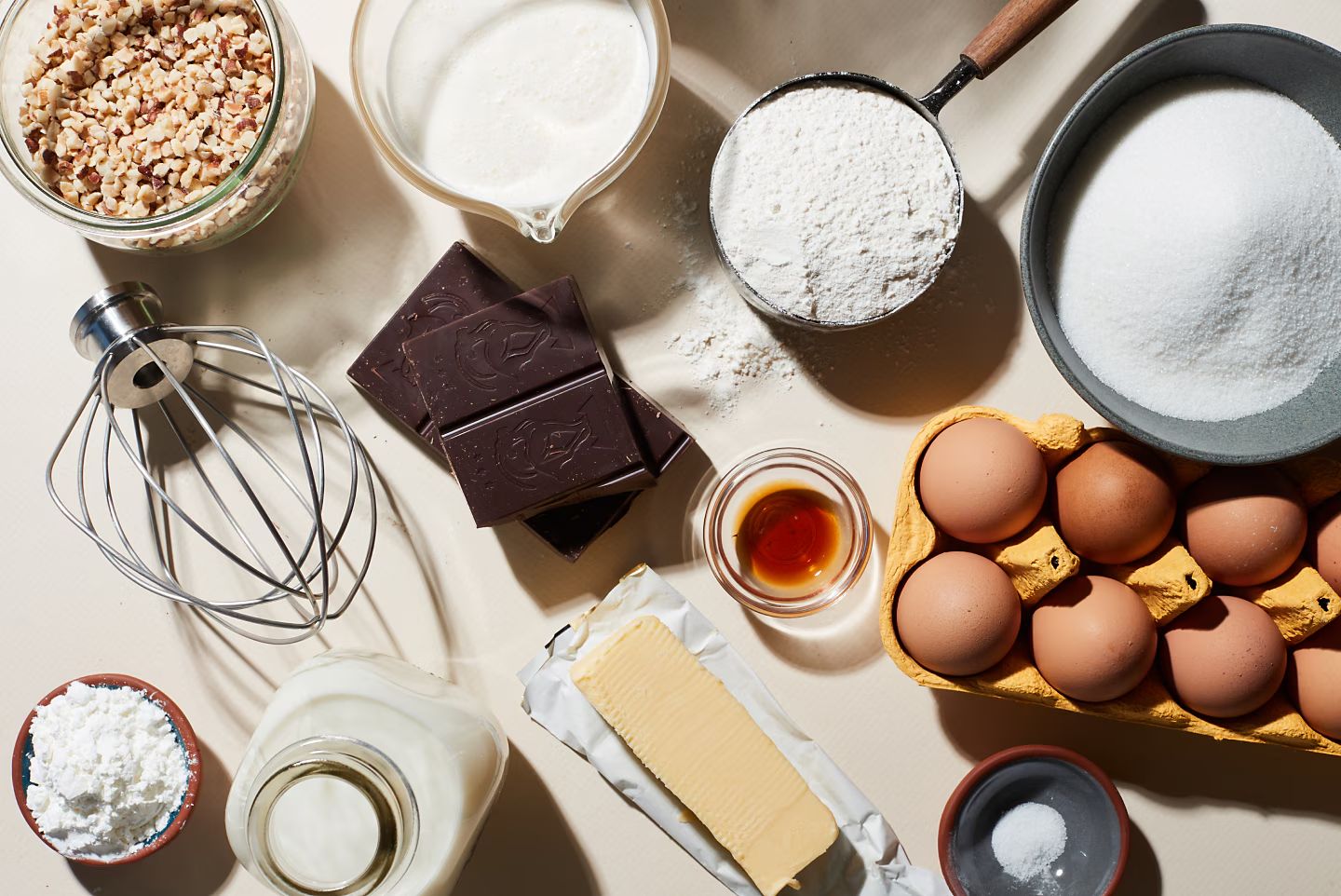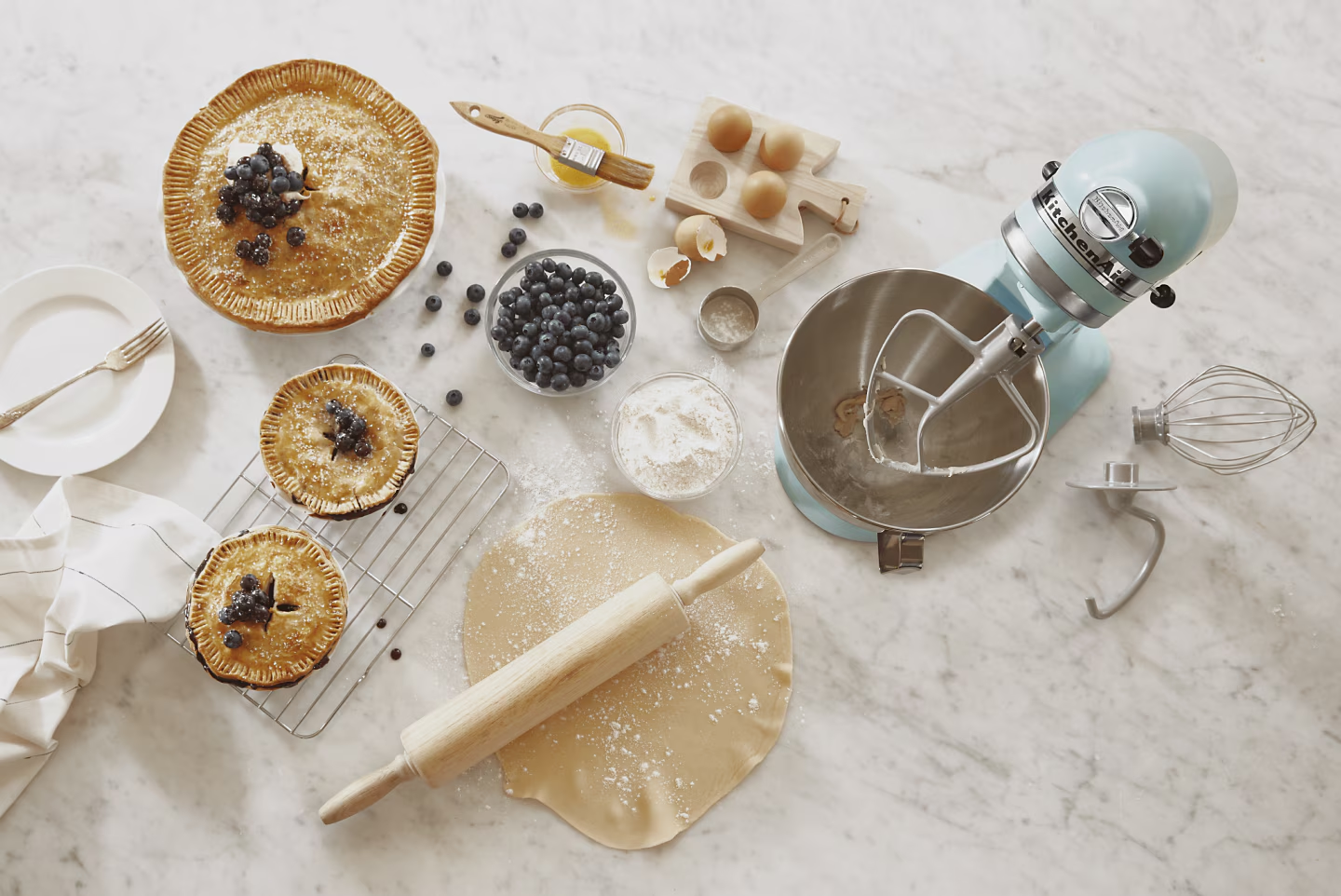What are pie weights? And when should I use them?
7 min read time
04 November 2025
Pie weights are small ceramic or metal balls that are used when blind baking. When you are blind baking, or prebaking, a pie crust, pie weights keep the crust from puffing up or shrinking away from the edge of the pie plate or pan. Read on to learn more about when to use pie weights and what you can use instead, if you don’t own any.
What are pie weights? And when should I use them?
What are pie weights? And when should I use them?

What is blind baking?
Blind baking is when you partially or fully bake a premade or homemade pie crust before filling it. You may want to blind bake a pie crust if the filling takes less time to cook than the crust or when making a cream or chiffon pie, because those types of filling are not baked at all. Blind baking a pie crust first can also help ensure that the crust remains crisp and not soggy when baking a pie filled with more wet ingredients.
Pie weights are used in blind baking to help keep the crust from bubbling, shrinking away from the pie plate or tart pan or puffing up on the bottom when there is no filling in it. Flaky pie crusts are generally going to have air pockets created when butter is cut into the flour using an attachment such as the Pastry Beater for KitchenAid® Tilt Head Stand Mixers. If the pie crust is not weighed down with filling, the air pockets can expand too much. Pie weights will help stop this from happening.
What happens if you blind bake without weights?
If you blind bake without pie weights, you might find that your pie crust forms air pockets that bubble up or that it shrinks as it bakes. Pie weights help to weigh down the dough, so that it holds its shape and stays nestled against the plate or pan.

What makes a good pie weight?
If you do not have ceramic or metal pie weights to use in baking, there are other options. Make sure that whatever you choose to use for a pie weight is oven and food safe. Some suggested pie weights are dried beans, dried rice, granulated sugar or popcorn kernels. Dried beans are a popular choice because they are similar in shape and size to ceramic pie weights.
What are the different types of pie weights?
Three common types of pie weights include ceramic ball pie weights, ball and chain weights or disc weights. Each type of pie weight has its own benefits.
Small ceramic ball pie weights fit any pan size and can be moved easily to cover every inch of crust. Ball and chain pie weights are a bit easier to collect than the ceramic balls since all the stainless steel balls are connected. A disc pie weight covers the entire crust and there are different sizes designed to fit different pans.

How do you use pie weights?
When blind baking, the pie crust is usually lined with parchment paper and the pie weights are set on top of the parchment. Spread the weights around so they're evenly distributed from the edge to the center and not all just piled in one place.
A single set of pie weights should cover an entire pie or tart crust, but if it seems as though your coverage is uneven, you may want to purchase more pie weights or use an alternative such as dried beans or popcorn kernels.
What can you use instead of pie weights?
Instead of pie weights, you can use dried beans or rice, granulated sugar, popcorn kernels or steel ball bearings. If you are not using pie weights, the idea is to mimic what the pie weight does and to make sure that the alternative is oven-safe.
Another idea is to lay your crust across the pie pan and nest a second pie pan on top of it, pressing them together. Then bake the pie crust upside down. It might be helpful to spray the bottom of the second pan with baking spray.

When should you not use pie weights?
Not all recipes that require blind baking will require the use of pie weights. Pie weights are designed to weigh down flaky crusts, but with any type of crushed cracker or cookie crust, such as graham cracker crusts, you likely will not need pie weights. These types of crusts will likely stay in place on their own. You also do not need pie weights if you are going to fill your pie before baking it.
Pie recipes
If you’re ready to start creating, explore the pie recipes below for some delicious inspiration.

1. Blueberry lattice pie

Follow this recipe to create a delicious pie that uses fresh blueberries and orange zest for the perfect combination of flavors.
2. Grilled peach pie

Follow this recipe for a sweet, summery pie that combines juicy grilled peaches, lemon and a hint of cinnamon.
3. Strawberry rhubarb pie

This recipe showcases the classic combination of strawberry and rhubarb held together with a delicious homemade crust.
KitchenAid Chef
— Sharing our passion for making
At KitchenAid, we unite people who love cooking and baking, brewing and creating. For over 100 years, KitchenAid has worked on behalf of every Maker out there. Our iconic tools are made with you in mind — opening the door to new possibilities and helping you to get most out of making.

